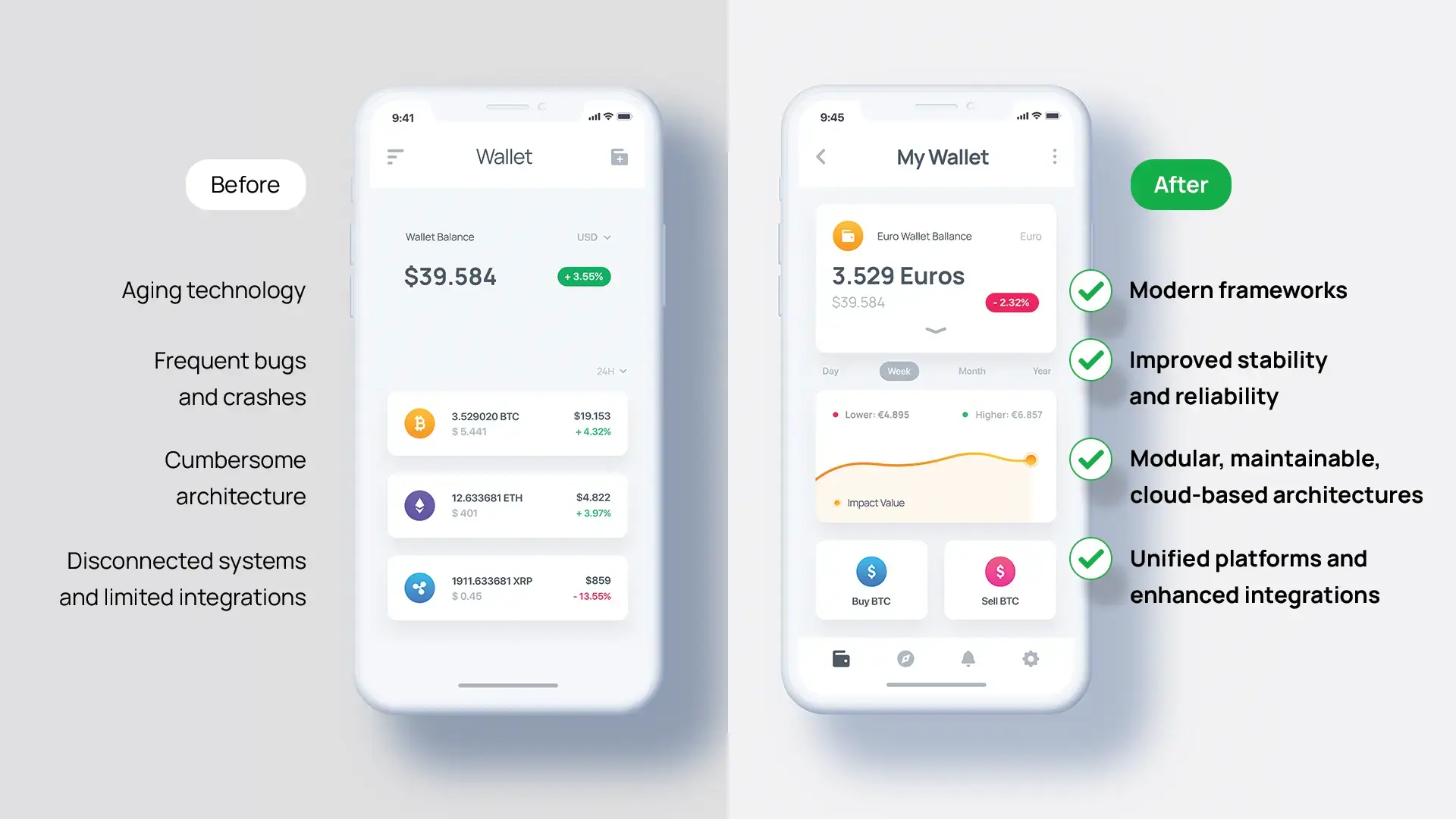When it comes to your mobile app development project, besides identifying how your application will function or the required resources, it’s important to figure out which platforms or technologies will best serve your needs in both the short and the long term. For this reason, we’ve compared two of the most used mobile app development approaches, Native and cross-platform - Flutter, in this case -, with the aim to help you choose the best one for your business needs.
Native mobile app development: advantages and disadvantages
Native mobile app development refers to building an app exclusively for one platform. Native apps are standalone software installed directly onto a smartphone (or tablet, smartwatch, etc.) and are built with programming languages and tools that are specific to a single platform: Swift (iOS) or Kotlin (Android). Native apps are known to deliver exceptional user experience (UX) but come with higher costs as you need to run concurrent development for both platforms. But let’s explore in more detail some of the most regarded pros and cons of building Native apps:
Advantages
The key advantages of the Native mobile app development approach are mostly related to app performance, UX, and maintenance:
- Improved performance and UX: an app can run smoothly if it’s built separately for a specific platform. Due to the higher performance of Native apps, they usually deliver an exceptional experience, which is enhanced thanks to the visuals that are tailored to the platform UX;
- Easy integrations with native mobile phone components (camera, Bluetooth, and add-on devices - watches, wristbands, etc.) and other native operating system APIs for calendars, reminders, etc. For cross-platform elements, you need all sorts of bridging solutions, which makes integrations more difficult. Moreover, you can easily find components with various libraries and SDKs, along with solutions to certain problems you might face in the development process;
- Development speed: in terms of code base complexity, you can develop iOS and Android apps in parallel, for example, which is easier than opting for a cross-platform project;
- Simple maintenance: the code base is lighter, which means it's easier to maintain and debug, compared to a Flutter project, for example, which is more cluttered and complex (you have to accommodate more platforms, the code base being larger).
Disadvantages
In essence, the disadvantages are cost-related, the higher costs stemming from the need to address all phases of a mobile app project for each platform. Also, the rollouts often need to be coordinated:
- Higher overall project cost
- Two separate projects with different bugs/issues
- Separate maintenance
Flutter - advantages and disadvantages
Flutter is an open-source framework developed by Google that allows you to build multiplatform applications from a single codebase. Flutter 3, the latest version of Flutter, supports six platforms: Android, iOS, Windows, macOS, Linux, and web applications.
According to Gergely Orosz’s book Building Mobile Apps at Scale, Flutter is the most mature cross-platform app development approach on the market. It is employed by big names, such as BMW, which has fully transitioned to Flutter, eBay Motors, or Nubank. Moreover, Google is investing heavily in Flutter and is building most of its new apps only using this technology.
Advantages
Here are some of the most important benefits of using Flutter for cross-platform app development:
- A single project and source code: you can write a single code base for both the business logic and layout;
- Simple testing process and fewer bugs: for example, if you discover a problem and you fixed it on iOS there's a high chance it gets fixed on Android as well;
- A shared UI/UX approach, which can help you reduce the design work of more platforms into a unified one;
- Reusability: you can reuse code between more platforms or even for the web.
Disadvantages
Using Flutter for cross-platform app development can also come with several disadvantages, depending on your business goal and development resources:
- Separate components for each platform: there can be problems with native components or integrations with various SDKs that don't support the new SDK for Flutter;
- Maintenance issues due to the complexity of the project. Being a more dense code, when you have to do debugging it might take a bit longer to discover a problem;
- Certain libraries are hard to find: some libraries don't offer SDK for Flutter;
- Drop/increase in performance: certain areas may register lower or higher performance compared to Native apps;
- Increased development time due to the high complexity of a Flutter project;
- Fewer Flutter developers out there compared to Native - you may have trouble finding capacity for the project;
- High maintenance costs, as the project is more complicated and it is harder to do debugging.
Is Flutter to Native migration possible?
You can build native code in the same Flutter project, but doing a 100% migration is not possible from Flutter to Native. Migration is possible, but complicated, from Native to Flutter, as the latter can help you with some embeddings where you can start building your app.
Why choose Flutter over other cross-platform mobile technologies?
Flutter is the most used cross-platform mobile development technology out there, the most mature one, with the highest developers pool. Moreover, it is the most stable and widely used by big companies with successful projects.
Why would a company choose Native or Flutter?
Native fits core business applications. If your app is the core business, you should invest in it as much as you can because that's where you get your revenue from. If budget and limited development resources are your concern, then Flutter would be an option for you.
To sum up:
Choose Native when
- your mobile app is the core of the business;
- your mobile app needs to be as good as it can be (high performance, great UX/UI);
- when you need integrations with hardware devices (printers, scanners, POS devices, etc.), wearables, or with native low-end APIs;
- your application is specifically dedicated to a mobile platform: e.g. courier applications that need to work only on Android smartphones and PDAs running Android.
Choose Flutter when
- you have a budget critical project;
- there’s the need for a simple layout and API calls (e.g. news or catalog apps);
- the app needs to be built for multiple platforms: mobile, web, or desktop.
Talk to our mobile development experts
With over 11 years of experience in developing mobile applications for companies such as Tazz, Sameday (app for couriers), Freshful by eMAG, Credit Europe Bank (Avantaj2Go), PayPoint, eMAG (eMAG Marketplace), Aurus, and many others, our mobile development team is always open to discuss your project.
Feel free to get in touch for a quick call to explore how you can accelerate your business with mobile app development.





